




We firmly believe that travel should be accessible to everybody. To be able to explore a place, journey somewhere new, feel a sense of adventure, discover new cultures and learn about local history is a very special experience. But for some, travel can be challenging.
We’ve compiled a guide to accessible travel within Europe, giving each country a rating out of five. We’ve updated our criteria for this new edition, though we still consider the accessibility of public buildings and services, transport, street movement, attractions, rural travel, government action and legal provisions.
We’ve put together a five-point criteria to score each country based on its ability to adapt and improve in five key areas.
Spotted something that you think isn’t right? Or think we’ve missed something? Use Rogan, our handy AI assistant to share information. He’ll pass on anything you say to us!
Visit ar.camp/tell-rogan or scan the QR code with your smartphone.
Building upon our previous five-point plan, we’ve combined some areas and adapted others for a simplified criteria. Each country is scored against these criteria based on its ability to adapt, improve and embrace the points below.


Are there legal provisions enshrined in the constitution to promote equality and antidiscrimination? How well-established are these laws?
Is local government making reasonable efforts to improve accessibility, opportunities and awareness and promote an open attitude towards less-abled people?

Ease of movement inside

How easy is movement within public buildings? Are indoor attractions, such as museums, galleries, theatres, theme parks, water parks, and historical and cultural sites, accessible to all?
Ease of movement outside

Are public spaces, parks and pedestrianised areas easy to access? Are pavements free of bulky street furniture? Is there tactile paving, dropped kerbs and level access? Are there cobbled areas?
Are all main modes of transport, such as buses, taxis, trains, trams and metro services, boats etc, adapted for ease of use? Are there disabled parking spaces and on-road parking spots?
The United Nations, European Union and national governments have introduced many laws, legislation, guidance and charters covering the rights of people living with disabilities. All 27 member states of the EU have common rules, while the UK, Norway and Switzerland have implemented their own version based on those of the EU.
Convention on the Rights of Persons with Disabilities (CRPD) Article 9 states that participating nations should: enable persons with disabilities to live independently and participate fully in all aspects of life [...] take appropriate measures to ensure access […] and eliminate obstacles and barriers […] ensure that private entities that offer facilities and services which are open or provided to the public take into account all aspects of accessibility [...]
Austria
Belgium
Croatia
Czech Republic
Denmark
France
Germany
Great Britain
Greece
Ireland
Italy
Luxembourg
Netherlands
Norway
Portugal
Slovenia
Spain
Sweden
Switzerland
European Accessibility Act 2019 (EAA) compliments the EU’s Web Accessibility Directive and reflects the obligations of the UN’s Convention on the Rights of Persons with Disabilities. It aims to improve product and service accessibility, provide a standard set of rules and make physical and digital life for disabled people easier.
UK Equality Act 2010 defines disability and the actions one must take to reasonably accommodate those who are disabled. It also prohibits discrimination of six types (direct, indirect, failure to make reasonable adjustments, discrimination arising from disability, harassment and victimisation) against those who are disabled.
Similar legislation exists in Norway (Equality and Anti-Discrimination Act 2017) and Switzerland (Disability Discrimination Act 2002/2017).
ARTICLE 25 Everyone has a right to a standard of living adequate for the health and well-being of himself and of his family, including food, clothing, housing and medical care, and necessary social services, and the right to security in the event of unemployment, sickness, disability, widowhood, old-age, or other lack of livelihood, in circumstances beyond his control.
The Universal Declaration of Human Rights is an international document adopted by the United Nations General Assembly that enshrines the rights and freedoms of all human beings.
The UDHR was adopted by 48 UN states upon its founding in 1948. Many modern states joined later as more became independent nations.

Belgium, Denmark, France, Greece, Luxembourg, Netherlands, Norway and Great Britain are original members, having joined upon conception. Other states that joined in 1948 include Yugoslavia (now Croatia and Slovenia) and Czechoslovakia (now Czech Republic). West and East Germany (now unified) joined in 1973, assuming its membership after unification in 1990.

ARTICLE 21 Any discrimination based on any ground such as sex, race, colour, ethnic or social origin, genetic features, language, religion or belief, political or any other opinion, membership of a national minority, property, birth, disability, age or sexual orientation shall be prohibited.

ARTICLE 2 Everyone’s right to life shall be protected by law.
ARTICLE 14 The enjoyment of the rights and freedoms set forth in this Convention shall be secured without discrimination on any ground [...]

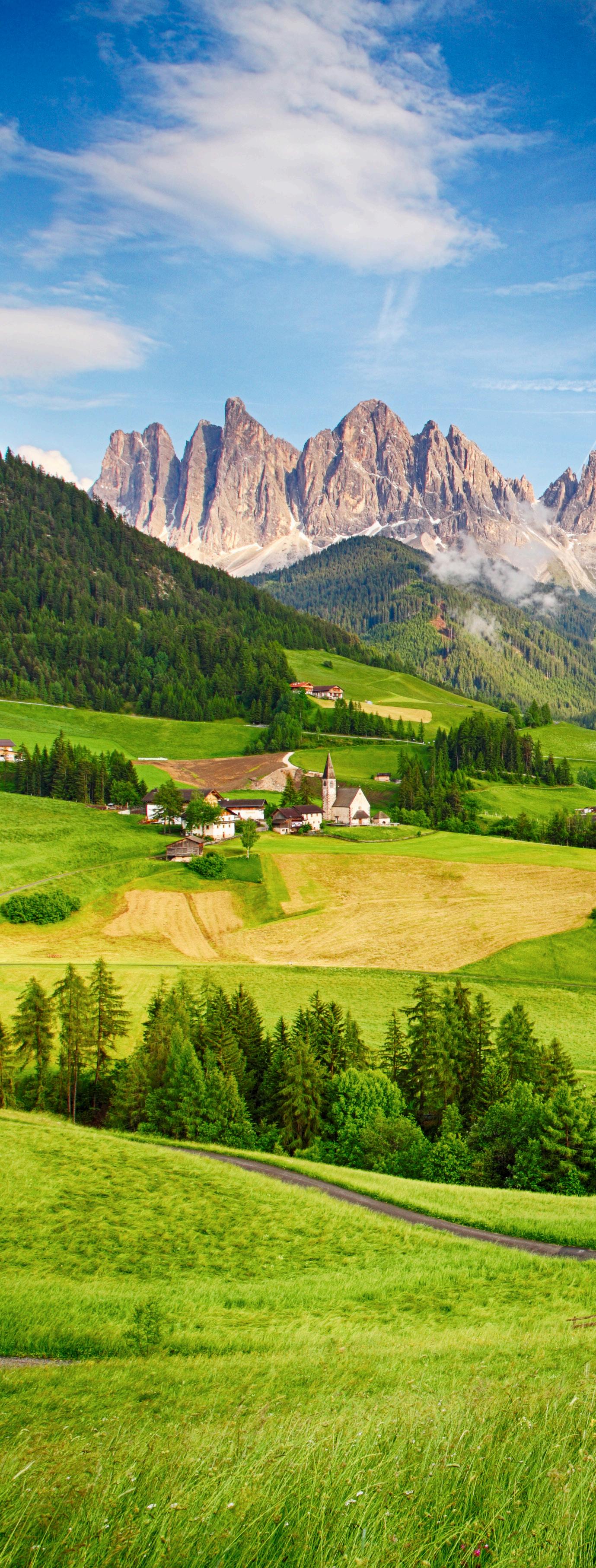
Austria is primarily known for two contrasting attractions: the capital Vienna with its cathedral, wine bars and musical events, and the skiing and hiking resorts of the Alps. It is an ideal place to visit all year round, for the Easter markets, winter sports and the many cultural and historical attractions, as well as the breathtaking scenery. The charming Tirol region in the west is easily accessible and popular with tourists who flock to its ski resorts in winter. It is transformed into a verdant landscape of picturesque valleys dotted with wildflowers in the summer.
Situated in the centre is the Lake District and Salzburg, the city of Mozart, with its wealth of gardens, churches and palaces. Vienna’s iconic Ferris wheel is a must for taking in the beautiful parks and architecture from a height of 200ft. The neighbouring provinces of Lower Austria, Burgenland and Styria, land of vineyards, mountains and farmland, are off the tourist routes but provide good walking territory. Further south, Carinthia enjoys a mild, sunny climate dominated by crystal clear lakes and soaring mountains. There are numerous monasteries and churches, and the cities of Villach and Klagenfurt, known for its old square and attractive Renaissance buildings.
Tourist website austria.info/uk
Need the emergency services? Call 112
Dolomites Alps - Val di FunesAdopted the Universal Declaration of Human Rights
Adopted the European Charter of Fundamental Rights
European Accessibility Act introduced across the European Union
Government actively working on improvement schemes in conjuntion with the EU and charities.
Ease of movement inside
Ramps into public buildings are common but not universal. There is no national organisation for the disabled, but regional tourist offices will offer help where they can. Most attractions in cities are accessible and provide dedicated facilities.
Ease of movement outside
Getting from A to B
What could be improved?
Accommodations have been made to make it easy to get around within cities and larger towns. Dedicated accessible routes have been made available. Outside of the major cities, accessibility is variable. Ski slopes and walking trails are adaptive and barrier-free.
Good access via road, rail and air. Facilities are available, and accommodations will be made where possible. Low-floor trams and buses are available. Reduced rates with ID.
A universal rollout of level access points could revolutionise accessibility and increase our score to a five. Establishing a national organisation or network to represent the less-abled community would be a good step forward.
A small country divided into three regions, Flanders in the north, Wallonia in the south and Brussels the capital. Belgium is rich in scenic countryside, culture and history, notably the great forest of Ardennes, the historical cities of Bruges and Ghent, and the western coastline with its long sandy beaches.
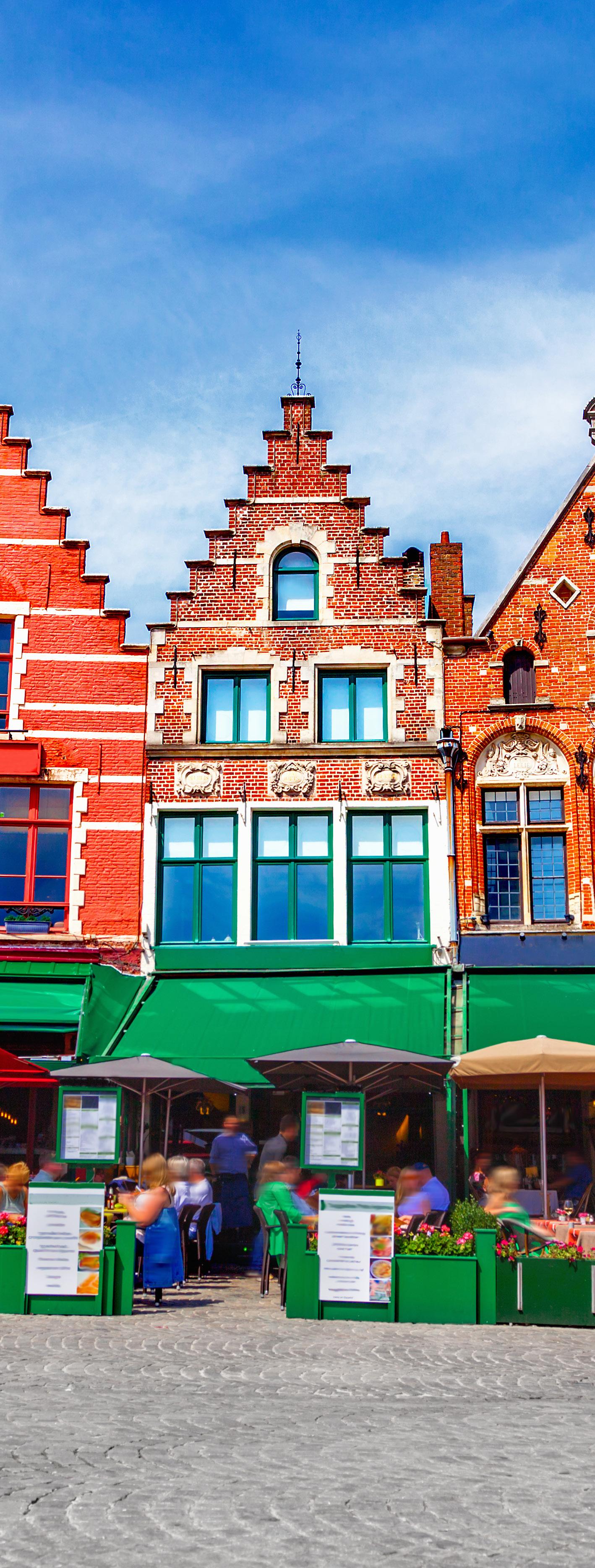
Brussels is at the very heart of Europe. It is a must-see destination with its heady mix of shops, bars, exhibitions and festivals – a multicultural and multilingual city that is a focal point of art, fashion and culture.
In the French-speaking region of Wallonia lies the mountainous Ardennes, home to picturesque villages rich in tradition and folklore. The safe, sandy beaches on the west coast run for 40 miles. The cosmopolitan resort of Ostend, with its yacht basin and harbour, offers year-round attractions and the myriad seafood restaurants will suit every taste. Bruges is Europe’s best-preserved medieval city. Running alongside willow-lined canals, the tiny cobbled streets, whislt pretty, often present problems for those using wheelchairs.
Tourist website visitbelgium.com
Need the emergency services? Call 112
 Grote Markt square in Brugge
Grote Markt square in Brugge
Adopted the Universal Declaration of Human Rights
Adopted the European Charter of Fundamental Rights European Accessibility Act introduced across the European Union
Government actively working on improvement schemes in conjuntion with the EU and charities.
Ease of movement inside
Central Square in Brussels is largely impossible for those in wheelchairs. Many public buildings in cities are accessible. Most attractions in tourist areas have made accommodations for wheelchair users, including level access, ramps, lifts, and wide and automatic doors.
Ease of movement outside
In Brussels, pavements and some roads are cobbled and can be challenging to manoeuvre. It is a hilly city, and some areas can be hard to reach. In more modern parts of major cities, kerb cuts and tactile paving have been installed. Rural caves and castles are inaccessible and unlikely to adapt.
Rail travel accommodations are made wherever possible but cannot be guaranteed. Booking in advance is essential. Reduced rates with ID. Metro stations are equipped with lifts and accessible facilities, and staff are on hand to help. Most buses have low-floors, wide doors and reserved seats on-board.
What could be improved?
Historical city centres present many challenges, and getting the right balance of preservation and access is difficult. More work is needed in this area.

Croatia has developed into a lively and friendly tourist destination while retaining its coastal ports’ unspoilt beauty and character, traditional towns and tiny islands with their secluded coves. Its rich history is reflected in its Baroque architecture, traditional festivals and two UNESCO World Heritage sites.
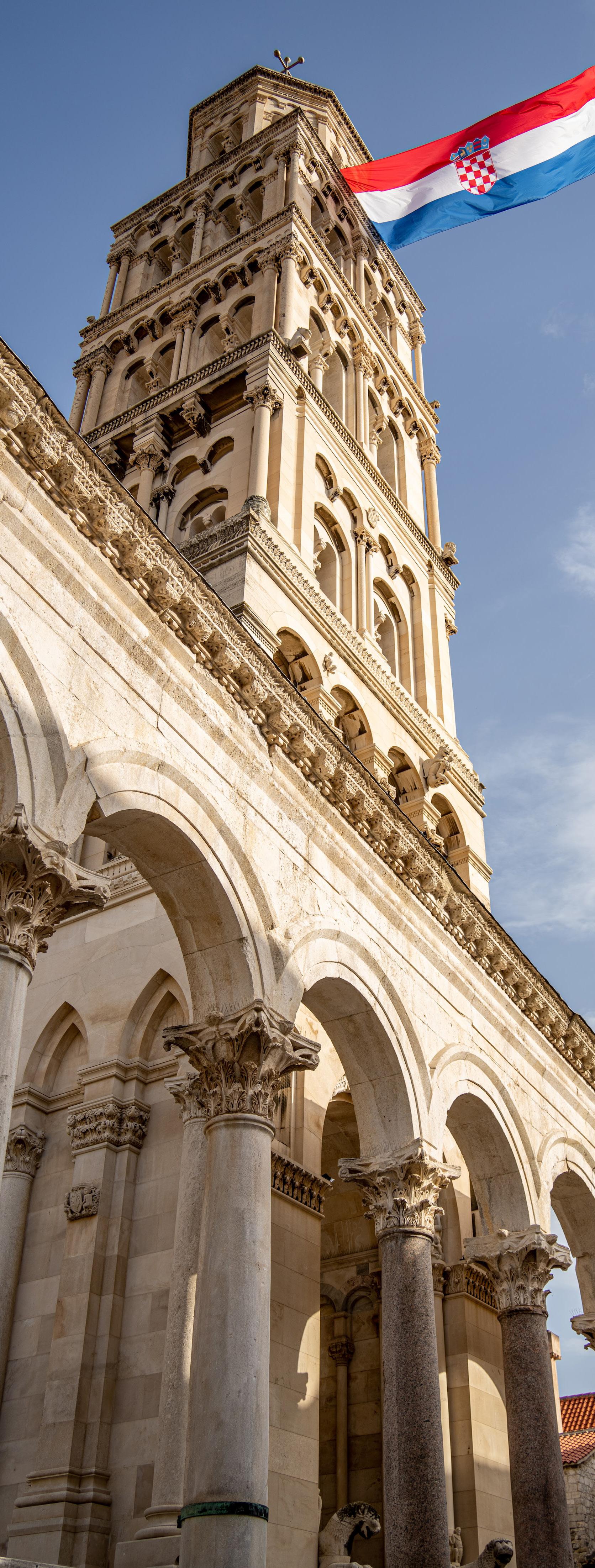
The most developed tourist regions include the peninsula of Istria, where you will find the preserved Roman amphitheatre in Pula, the beautiful town of Rovinj (BEWARE: cobbled streets and wooded hills), and the resort of Umag, with a busy marina and charming old town.
Further south, in the province of Dalmatia, Split is Croatia’s second-largest city and lies on the Adriatic coast. It is home to the impressive Diocletian’s Palace. The old walled city of Dubrovnik is 150 km. south. A favourite of George Bernard Shaw, who described it as ‘the pearl of the Adriatic’, it has a lively summer festival, numerous historical sights and a newly restored cable car to the top of Mount Srd.
Need the emergency services? Call 112
Split, Croatia
Tourist website croatia.hrLegal Provision
Adopted the Universal Declaration of Human Rights
Adopted the European Charter of Fundamental Rights
European Accessibility Act introduced across the European Union
Government not actively engaging in improvement schemes. New legislation requires new buildings to provide easy access.
Ease of movement inside
New buildings are required to provide accommodations for those who are less-abled, but older buildings are not. Public WCs are wheelchair-friendly. Easy access is not universal and depends on the building type and surrounding geography. Efforts are being made to improve, but slowly
Ease of movement outside
Getting from A to B
What could be improved?
The geography of the country is hilly and access to some parts of the country can be steep and difficult. Outside of urban areas, accessibility worsens significantly.
Accessibility accommodations are not universal and can be limited, especially on rural routes, but assistance will sometimes be offered. Bus and train stations in major cities are wheelchair-friendly, but ferries are often not.
The reluctance to retrofit older buildings is holding back progress, and, like Belgium, there are dilemmas around how to make historical centres more accessible.

The Czech Republic is a land of fascinating castles, romantic lakes and valleys, picturesque medieval squares, and famous spas. It is divided into two main regions, Bohemia to the west and Moravia in the east.
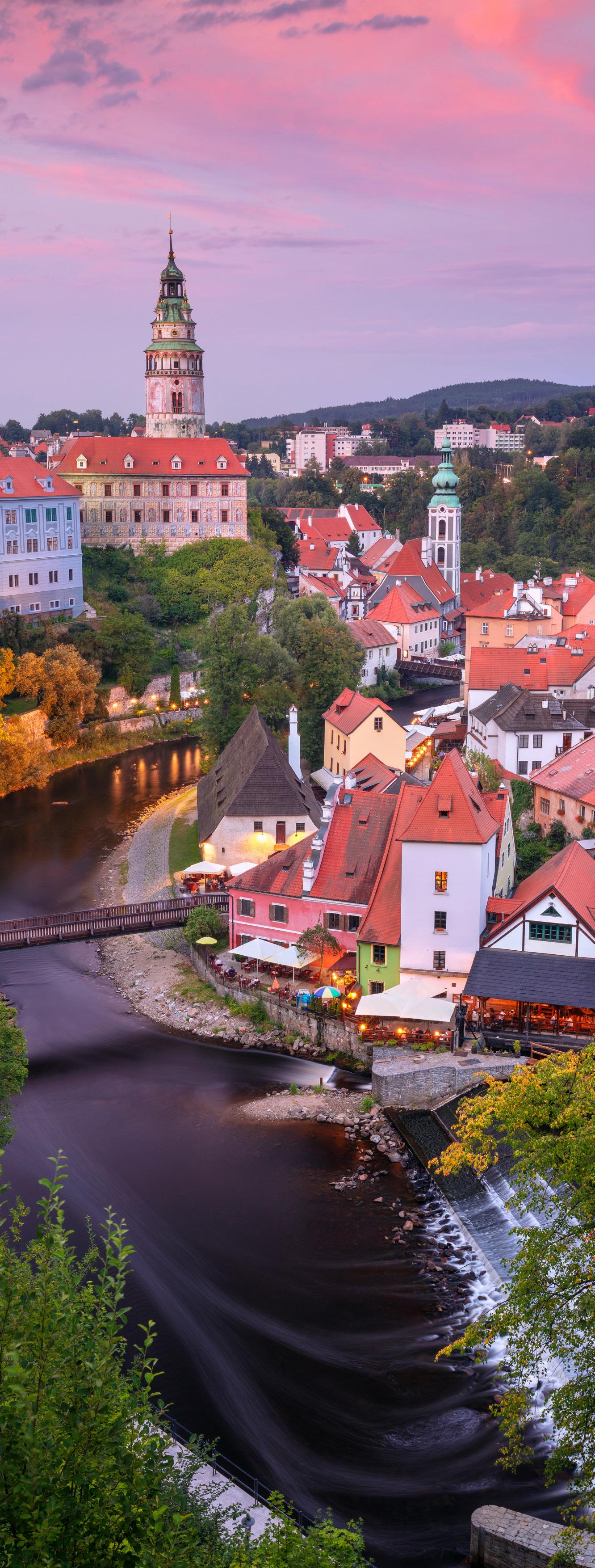
Although small, the Czech Republic has a wealth of attractive places to explore. The historic city of Prague is the hub of tourist activity and a treasure trove of museums, historic architecture, art galleries and theatres, and the annual 17-day beer festival!
West Bohemia is home to three renowned spas: Karlovy Vary, Mariánské Lázne and Františkovy Lázne, which have developed around the hundreds of mineral springs which rise in this area and offer a wide variety of restorative treatments.
Brno is the capital of Moravia in the east, lying midway between Prague, Vienna and Budapest. Visitors will admire its beautiful architecture, notably Mies van der Rohe’s Villa Tugendhat.
Need the emergency services? Call 112
Legal Provision
Adopted the Universal Declaration of Human Rights
Government Action
Adopted the European Charter of Fundamental Rights
European Accessibility Act introduced across the European Union
Government not actively engaging in improvement schemes. New legislation requires new buildings to provide easy access.
Ease of movement inside
Historic monuments provide varying accessibility options. Many old buildings, including museums, are not accessible, but new buildings are better equipped. Public and restaurant WCs are mostly wheelchair-friendly. Improvements are being made, but access is not universal or widespread at present.
Ease of movement outside
Getting from A to B
Although historic, the city of Prague is mostly accessible. However, cobbled streets and high kerbs could present difficulty. Outside of urban areas, attractions and trails are not accessible, and facilities are minimal.
Subway accessibility has improved, but gaps remain. Some buses and trams are equipped to assist disabled travellers, but it is not universal.
What could be improved?
Prague is undoubtedly a frontrunner, leading the way with accessible attractions and easy movement around the centre; however, other cities and tourist areas are slow to follow.

Denmark offers a diverse landscape, all within a relatively short distance. The countryside is green and varied with flat plains, rolling hills, fertile farmland, many lakes and fjords, wild moors and long beaches, interspersed with pretty villages and towns.
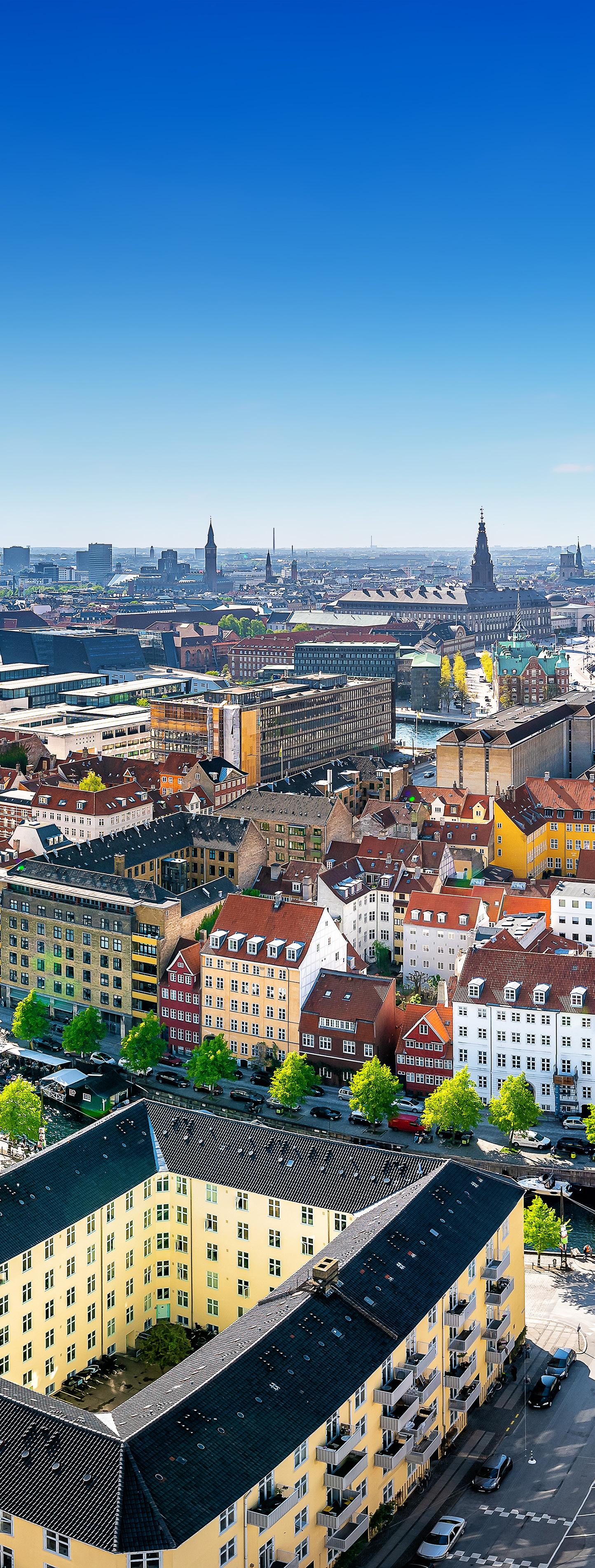
It is the easiest of the Scandinavian countries to visit, and distances are short, so it is easy to combine the faster pace of the city with the tranquillity of the countryside. It comprises the peninsula of Jutland and the larger islands of Zeeland and Funen, and hundreds of smaller islands, many uninhabited.
Zeeland is home to the climate-friendly capital city, Copenhagen, with its relaxing waterside cafés, vibrant nightlife, Michelin star restaurants and the stunning Frederiksborg castle. Funen is Denmark’s second-largest island, linked to Zeeland by the Great Belt Bridge.
Known as the Garden of Denmark, its gentle landscape is dotted with orchards and pretty thatched, half-timbered houses. It also has plenty of safe, sandy beaches.
Adopted the Universal Declaration of Human Rights
Adopted the European Charter of Fundamental Rights
European Accessibility Act introduced across the European Union
Government actively working on improvement schemes in conjuntion with the EU and charities.
Ease of movement inside
In Copenhagen, there are dedicated disabled WCs dotted around the city. Whilst in other cities, public WCs mostly wheelchair-friendly. Reduce rates are available in some museums and galleries with ID. The central shopping mall in Copenhagen provides level access and lifts. Attractions are not universally accessible, so it is worth checking ahead of your visit.
Ease of movement outside
Getting from A to B
Outdoor spaces are generally easy to navigate, but some historic areas in spaces surrounding older buildings may be challenging. Rural facilities could be limited.
What could be improved?
All Metro stations in Copenhagen are step-free, and buses are ramp-accessible with assistance. Facilities in other urban areas may be less reliable, though generally good. Rural transport may offer limited facilities.
Denmark is generally considered, along with other Nordic countries, to be one of the most accessible countries in Europe. Privately-owned attractions and rural areas need to adopt universally accessible facilities.
From the hot sunny climate of the Mediterranean to the more northerly and cooler regions of Normandy and Brittany, with the Châteaux of the Loire and the lush valleys of the Dordogne, and the mountain ranges of the Alps, France offers holidaymakers a huge choice of destinations to suit all tastes.
France boasts every type of landscape, from wooded valleys to volcanic uplands, rocky coasts to lavender-covered hills and snow-capped peaks. The diversity of these regions is reflected in the local customs, cuisine, architecture and dialect.
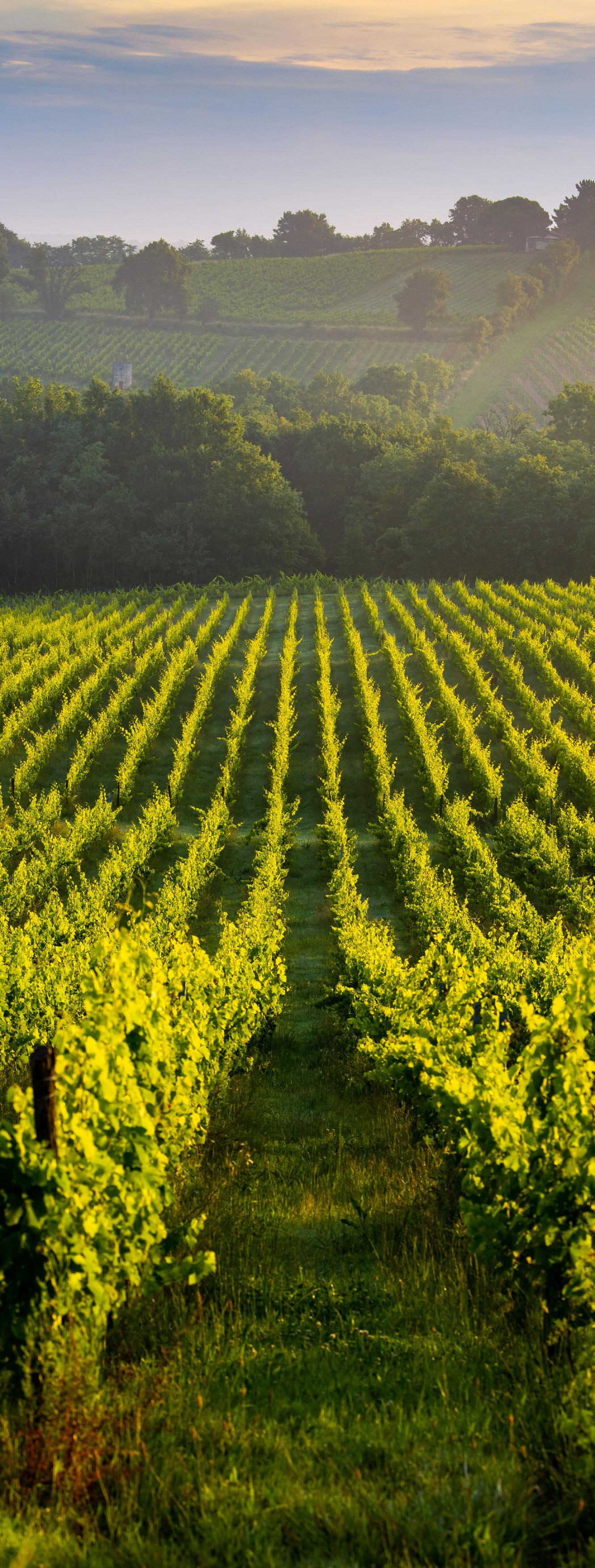
France has a rich cultural heritage with a wealth of festivals, churches, châteaux, museums and historical monuments to visit. Many rural villages hold festivals to celebrate the local saints. You can also find museums devoted to the rural arts and crafts of the regions. And no trip to France is complete without sampling the fantastic local food and wine.
Tourist website france.fr/en
Need the emergency services? Call 112
 Vineyards of Bordeaux
Vineyards of Bordeaux
Adopted the Universal Declaration of Human Rights
Adopted the European Charter of Fundamental Rights
European Accessibility Act introduced across the European Union
Government actively working on improvement schemes in conjuntion with the EU and charities.
Ease of movement inside
The Paris tourist office provides excellent information. Many buildings are old and can be hard to navigate. Provisions have been made in some buildings. New buildings have to, by law, provide access to all. Historic attractions do not always offer level access; newer attractions often do.
Ease of movement outside
Getting from A to B
Cluttered pavements can present problems, but improvements are actively being made. In major cities, open squares and wide streets provide space to manoeuvre. Smaller towns and rural villages will certainly provide challenges with steep climbs, narrow streets and cobbled pavements. Rural areas sometimes provide central parking.
Access to the Paris Metro is impossible for wheelchair users and challenging for those who are less-abled. Buses and trams in nearly all major cities are 100% wheelchairfriendly. The National train network can accommodate wheelchairs with assistance.
What could be improved?
Improvements are being made, but progress could be faster. The rollout of a universal system across a country so large and diverse in landscape is an understandably complex operation.

With its wealth of scenic, historical and cultural interests, Germany is a land of contrasts. From the flatlands of the north to the wooded mountains in the south, with forests in the east and west, regional characteristics are a strong feature of German life and present a rich variety of folklore and customs.

Each region has its own unique identity. Home of lederhosen, beer and sausages is Bavaria in the south, with small towns, medieval castles and Baroque churches. It is also home to the fairytale 19th-century Romanesque Revival castle of Neuschwanstein. In the southwest, Baden Württemberg is famous for its ancient Black Forest and its spas and boasts the most hours of sunshine. Further west is the stunningly beautiful Rhine Valley, where the river winds through steep hills dotted with castles, ruins and vineyards.
Eastern Germany is studded with lakes and rivers and undulating lowlands that give way to mountains. The north has busy cities such as Bremen and Hamburg as well as traditional North Sea family resorts. The capital city of Berlin, situated in the northeast of the country and once divided by the Berlin Wall, is an increasingly popular tourist destination.
Need the emergency services? Call 112
Neuschwanstein Castle Tourist website germany.travelLegal Provision
Adopted the Universal Declaration of Human Rights
Adopted the European Charter of Fundamental Rights European Accessibility Act introduced across the European Union
Government actively working on improvement schemes in conjuntion with the EU and charities.
Ease of movement inside
Many public buildings, including museums and entertainment complexes, are accessible with ramps, lifts and level access. Local and regional tourist offices provide reliable advice and information. Berlin was awarded “European Access City of the Year” by the European Commission in 2012. Provisions have been made to provide level access and barrier-free movement in many attractions. However, some attractions, especially older, historic buildings or those with limited space, have yet to adapt.
Ease of movement outside
Getting from A to B
Historic areas can prove challenging to navigate due to cobbled and cluttered streets. Improvements are being made, but rural areas do fall behind regarding accessibility. Always check ahead.
Trains, trams, buses, ferries, and the metro are mostly accessible. Train stations are fully accessible. Disable parking spaces are available in most public and private car parks.
What could be improved?
The accessibility network is fantastic across Germany, so most schemes focus on retrofitting older buildings and attractions and connecting isolated rural areas.

Camping in Great Britain offers a wealth of extraordinary landscapes set against the backdrop of a rich and vibrant history. In terms of character and stunning scenery, it offers an unsurpassed choice of holiday activities from coast to country.
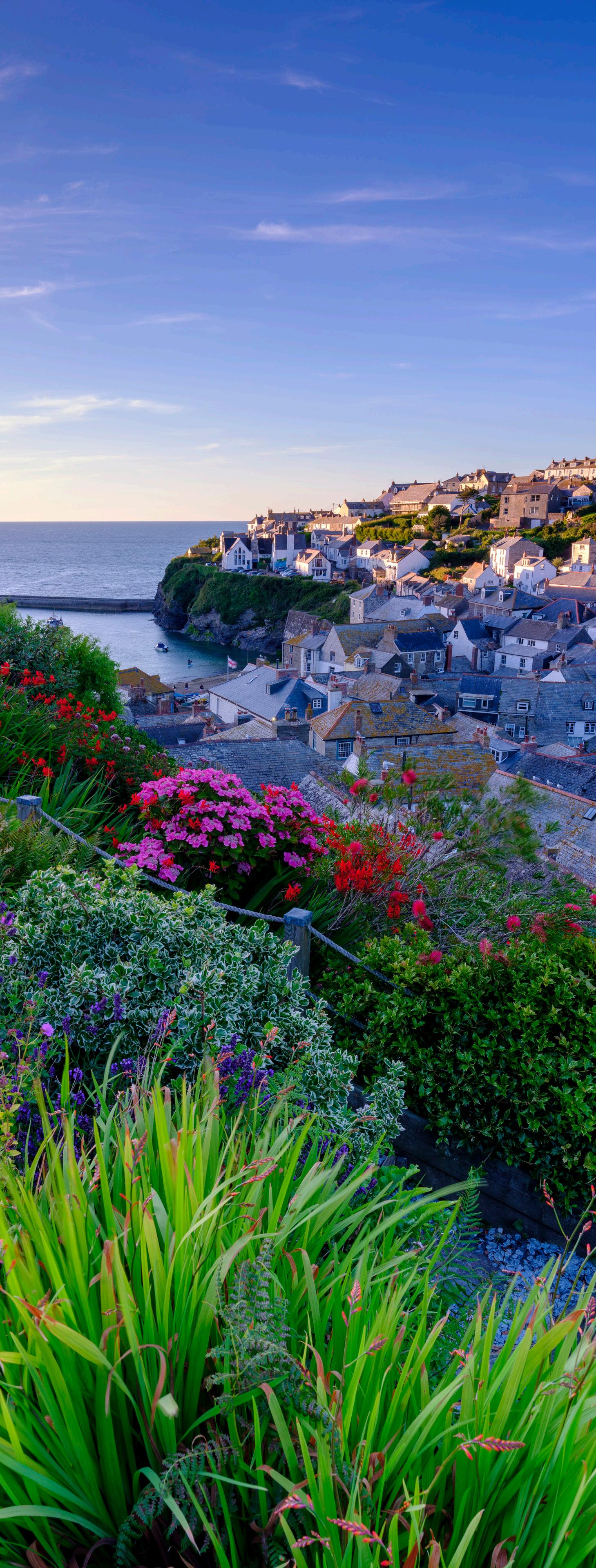
Despite its notoriously unpredictable weather, camping and caravanning in Great Britain is an adventure. Campsites in general offer easy access to spectacular terrain, but the campsites in Great Britain provide an unbeatable mix of scenery with the widest range of terrain.
Activity trails criss-cross the countryside showcasing the best scenery (not always easy to navigate if you use a wheelchair or walking aid). Follow paths through glorious bluebell woods in spring, skirt around magnificent lakes and landscaped gardens in summer or simply amble through a quintessentially British village with roses clambering up the ancient walls, hear the church bells tolling and soak up the sense of history.
Tourist website visitbritain.com
Need the emergency services? Call 999
Port Isaac CornwallAdopted the Universal Declaration of Human Rights
Human Rights Act introduced. Adoption commenced in 2000
Equality Act introduced in England, Scotland and Wales
Government actively working on improvement schemes in conjuntion with national networks and charities.
Ease of movement inside
Most buildings in cities provide level access. All national museums and galleries are accessible. Tourist offices can provide helpful information and, in London, patrolling police officers can provide help. Disabled WCs are available nearly everywhere. Reduced rates for many attractions can be obtained with ID. National Museums are free for all.
Ease of movement outside
Public spaces, pavements and pedestrian areas are generally easy to navigate; street furniture, thoughtfully placed, dropped kerbs, tactile paving, and level access are commonplace in cities and towns. Smaller towns and villages may not be so navigable.
Transport services are almost always accessible. The London Underground is improving – all step-free stations are marked on the Tube map. Network operators should provide assistance. Rural transport often offer wheelchair access and dedicated onboard space. Reduced rates with ID.
What could be improved?
Pavement parking is an issue. Streets are crowded with parked vehicles leading to insufficient space for pedestrians and wheelchair users. New laws are combatting this.
Greece is made up of clusters of islands with idyllic sheltered bays and coves, golden stretches of sand with dunes, pebbly beaches, coastal caves with steep rocks and black volcanic sand and coastal wetlands. Its rugged landscape is a monument to nature with dramatic gorges, lakes, rivers and waterfalls.
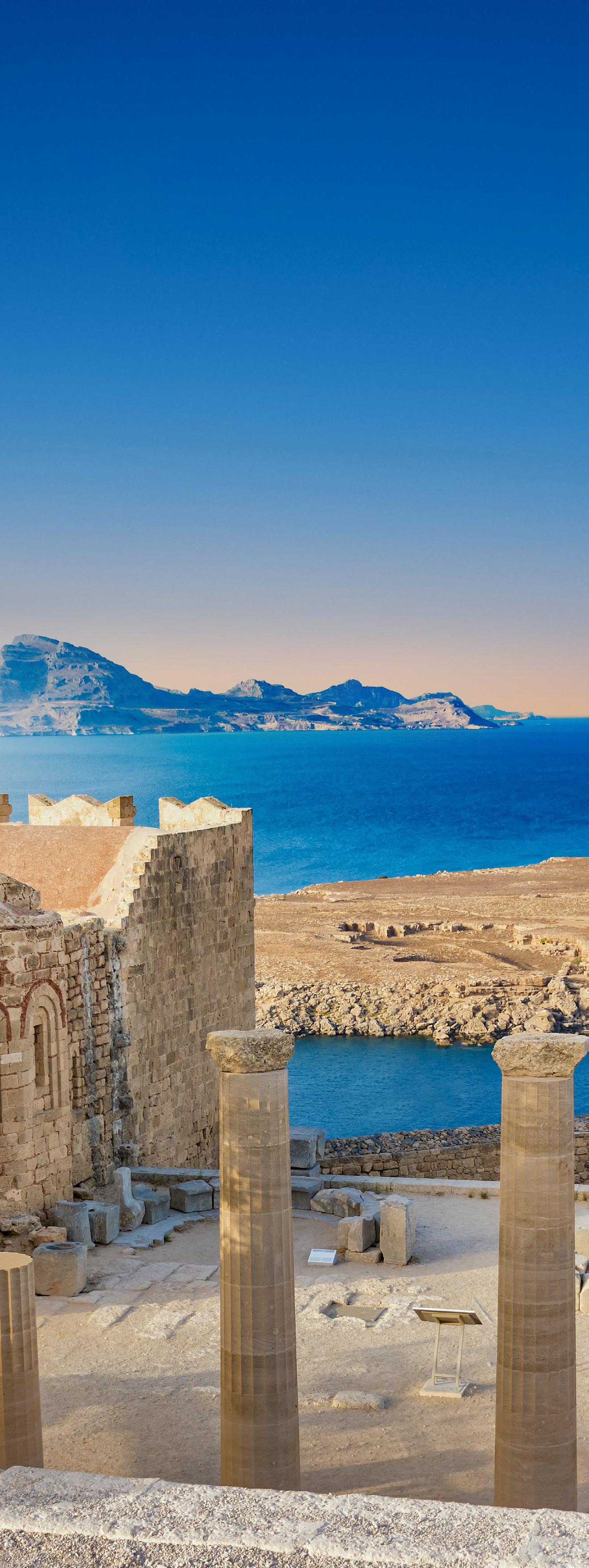
Nestling between the Aegean, Ionian and Mediterranean waters, Greece has over 13,000 km of coastline. A largely mountainous country, its backbone is formed from the Pindus range, which extends as far as Crete, the largest of Greece’s 6,000 islands, themselves peaks of the now-submerged landmass of Aegeis.
The Greek islands have something to offer every visitor – the vibrant nightlife of Mykonos, the ‘honeymoon’ island of Santorini, Rhodes, where the modern city sits alongside the medieval citadel, and Corfu with its Venetian and French influences. The mainland is home to some of the most important archaeological sites, including the Acropolis, the Parthenon and Delphi.
Tourist website visitgreece.gr
Need the emergency services? Call 112
 Rhodes
Rhodes
Adopted the Universal Declaration of Human Rights
Adopted the European Charter of Fundamental Rights
European Accessibility Act introduced across the European Union
Government actively working on improvement schemes in conjuntion with the EU and charities.
Ease of movement inside
Some public buildings are accessible, mainly in Athens. Improvements have been made elsewhere, but check before travelling. Public WCs are rare. Although facilities are cramped, most cafes or restaurants are a better option, provided you make a purchase. The Acropolis and its Museum, Agora and National Archaeological Museum are fully accessible, and there are disabled WCs across these sites.
Ease of movement outside
Getting from A to B
Due to the country’s naturally uneven terrain, movement can be challenging. In Athens, tactile paving and ramps have been installed, and illegal parking in disabled car spaces is being clamped down on. Outside cities, cobbled, narrow and crowded streets make exploring on wheels very hard. Rural areas are largely inaccessible.
In Athens, all buses and taxis are wheelchair-friendly. All stations across the capital’s metro network are fully accessible via lift. Transport outside the capital is a little more hit-and-miss.
What could be improved?
Lack of funding is often cited as a problem, especially for accessibility projects. Greece’s ancient heritage and infrastructure is difficult to adapt, so solutions are needed.

Famed for its folklore, traditional music and friendly hospitality, the Republic of Ireland offers spectacular scenery within a relatively compact area. With plenty of beautiful areas to discover and a relaxed pace of life, it is an ideal place to unwind.
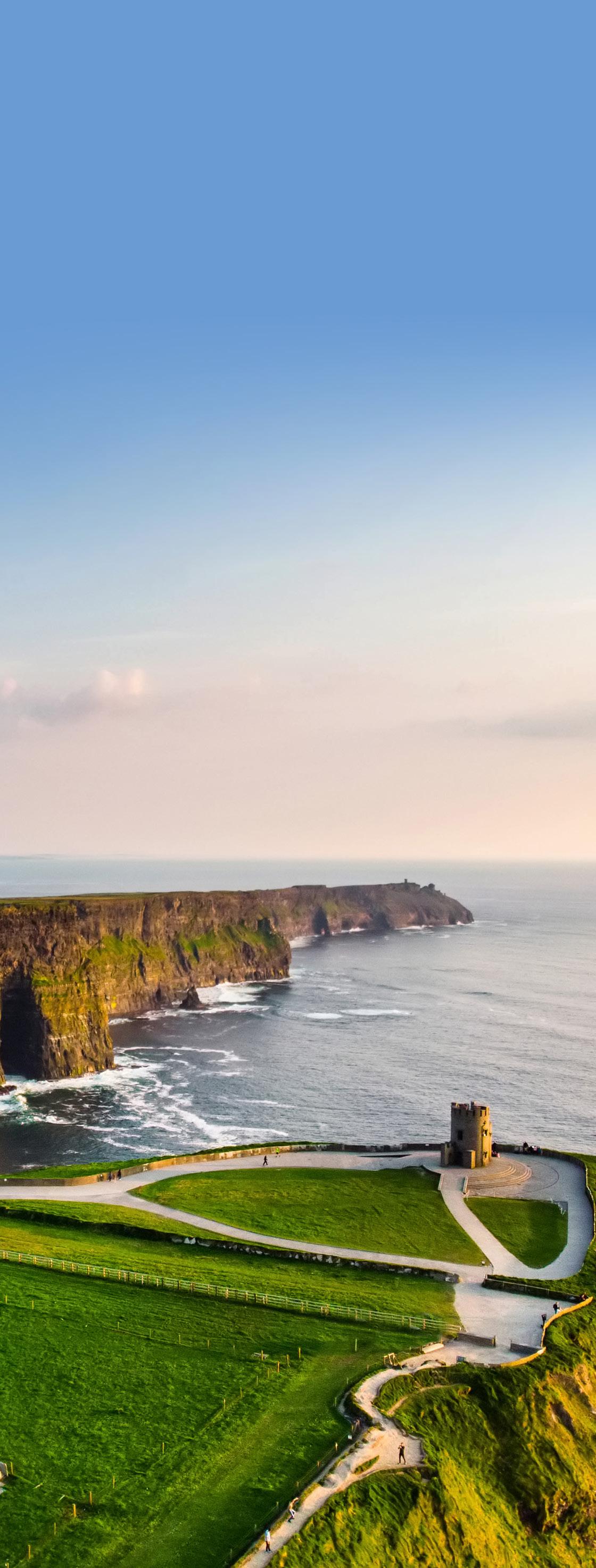
With its headlands, secluded coves and sandy beaches, the dramatic coastline is fantastic for exploring or for just simply relaxing and watching the variety of seabirds that nest on the shores.
The Cliffs of Moher is a prime location for birdwatching and Goat Island, just offshore, is where puffins make their nesting burrows.
In the south, the beautiful Ring of Kerry is one of the most visited regions. This 110-mile route encircles the Inveragh Peninsula and is surrounded by mountains and lakes. Other sights include the Aran Islands, the Rock of Cashel and the bustling cities of Dublin, Galway and Cork.
Tourist website ireland.com
Need the emergency services? Call 112
Cliffs of MoherAdopted the Universal Declaration of Human Rights
Adopted the European Charter of Fundamental Rights
European Accessibility Act introduced across the European Union
Government actively working on improvement schemes in conjuntion with the EU and charities.
Ease of movement inside
Most buildings in cities provide easy access. Public spaces in cities and larger towns are easily navigable. Tourist offices can provide useful advice. Disabled WCs are widespread. Castles, abbeys and ruins are usually wheelchair-friendly, but often one cannot access the whole site. Accessible Ireland provides an extensive list of attractions suitable for wheelchair users.
Ease of movement outside
Getting from A to B
Outdoor spaces are generally easy to navigate, but some areas around old buildings may be difficult. Accessible green routes are available. Rural areas are largely accessible by car, and some provide disabled parking spaces. Cobbled streets, high kerbs, hilly terrain and steps make them challenging to explore.
Taxis displaying the wheelchair symbol on the roof are wheelchair-friendly. Most bus services are accessible via ramps and raised pavements. Trains are accessible but only with assistance. Local authorities provide disabled parking spaces in most council-run car parks and city centres.
What could be improved?
Rural and historic areas are yet to adapt fully, but progress is being made.

Once the capital of the Roman Empire, Italy was unified as recently as 1861; thus, regional customs and traditions have not been lost. Its enviable collections of art, literature and culture have had worldwide influence and continue to be a magnet for visitors who flock to cities such as Venice, Florence and Rome.
In the north, the vibrant city of Milan is the fashion capital of the world and home to the famous opera house, La Scala, as well as Da Vinci’s ‘The Last Supper. It is also a good starting-off point for the Alps; the Italian Lake District, incorporating Lake Garda, Lake Como and Lake Maggiore; the canals of Venice and the lovely town of Verona.
The historic capital of Rome with its Colosseum and Vatican City is not to be missed.
Naples is an ideal base for visiting Pompeii (prepare for uneven terrain) and the breathtaking scenery of the Amalfi coast. The city also has a charm of its own – winding narrow streets and crumbling façades inset with shrines sit alongside boutiques, bars and lively street markets amid chaotic traffic and roaring scooters.
Tourist website italia.it
Need the emergency services? Call 112
 Tuscany
Tuscany
Adopted the Universal Declaration of Human Rights
Adopted the European Charter of Fundamental Rights
European Accessibility Act introduced across the European Union
Government actively working on improvement schemes in conjuntion with the EU and charities.
Ease of movement inside
While most buildings have lifts, they are rarely wide enough to accommodate wheelchairs. Modern buildings are better equipped. Museums and galleries offer reduced or free entry with recognised ID. Some museums, such as Florence’s Uffizi, include tactile models of major artworks for visitors with impaired vision. Other major attractions are mostly accessible by lift, ramp or level access.
Ease of movement outside
Getting from A to B
Cobbled and cluttered streets, outside dining and steep hills make Italy a challenge for wheelchair users. Older parts of cities tend to be the most challenging areas, but even tarmacked areas can be tricky due to lack of maintenance. Rural areas are largely inaccessible.
Most urban buses are wheelchair-friendly, but not all bus stops are. Some taxis are equipped to carry wheelchairs; ask for ‘sedia a rotelle’ (wheelchair). Trains are mostly accessible with assistance. Disabled parking spaces can be found in major cities. With its stepped bridges and canal-dependant transport, Venice is a no-go for wheelchair users.
What could be improved?
Lack of maintenance is one of the biggest issues, along with the problems that historic buildings present for the less-abled.
The Grand Duchy of Luxembourg is a sovereign state lying between Belgium, France and Germany. Divided into two areas: the spectacular Ardennes region in the north and the rolling farmlands in the south, bordered on the east by the wine-growing area of the Moselle Valley.
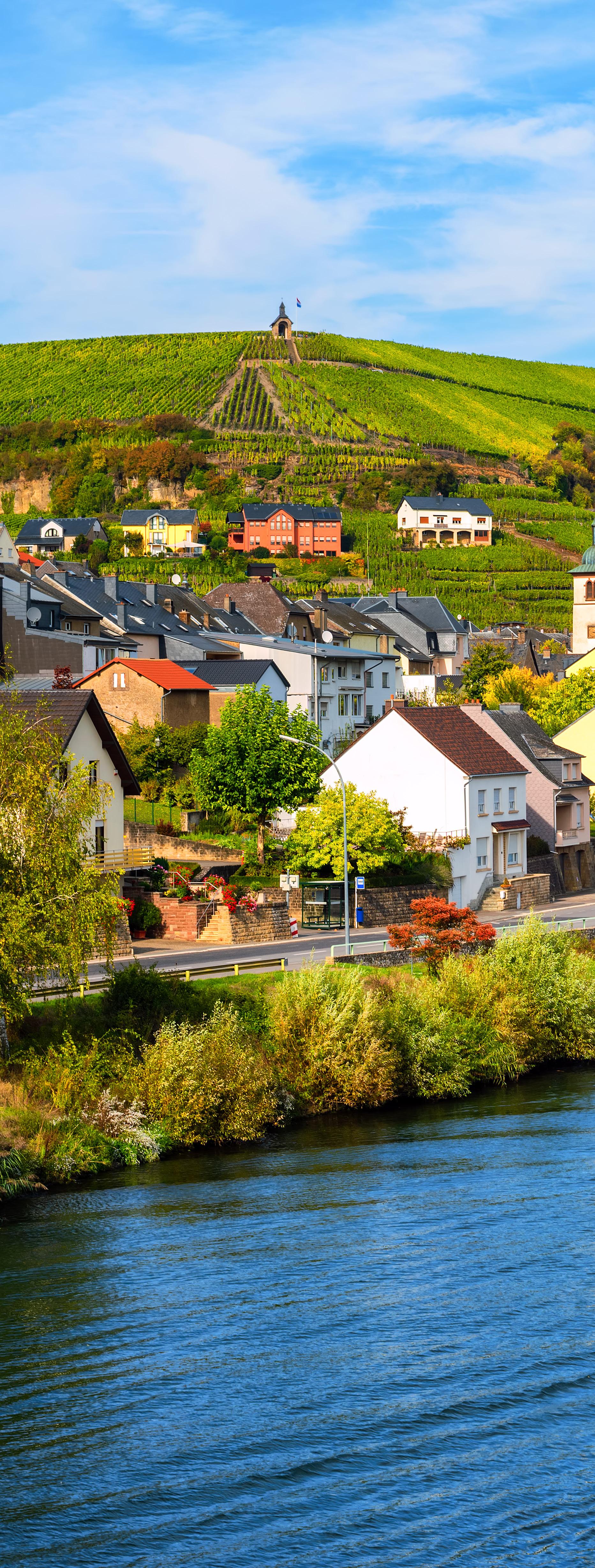
Most attractions are within easy reach of Luxembourg’s capital, Luxembourg-Ville, a fortress city, perched dramatically on its rocky promontory overlooking the Alzette and Petrusse Valleys.
The Moselle Valley, famous for its sweet wines, is just across the river from Germany. Popular wine tasting tours take place from late spring to early autumn. Echternacht is a good base for exploring the Mullerthal region, known as ‘Little Switzerland’. Lying on the banks of the River Sûre, its forested landscape is dotted with curious rock formations and castle ruins, notably those at Beaufort and Larochette.
Tourist website visitluxembourg.com
Need the emergency services? Call 112

Legal Provision
Adopted the Universal Declaration of Human Rights
Adopted the European Charter of Fundamental Rights
European Accessibility Act introduced across the European Union
Government actively working on improvement schemes in conjuntion with the EU and charities.
Ease of movement inside
Most public buildings in Luxembourg city, whether modern or historic, provide easy access via ramps, lifts and level flooring. Public spaces in the city are easily navigable. Most major urban attractions, including historic buildings, are accessible. Smaller and more rural attractions are adapting.
Ease of movement outside
Getting from A to B
As one of the three de facto EU capitals, the government has invested significantly in ease of movement, especially around Luxembourg City. Even in the UNESCO-listed city centre, ramps, level and flat pavements, and modern pedestrian crossings have been installed. The historic quarter is the only area which may present difficulties.
All public transport is free. Most buses and trams are wheelchair-friendly. Trains are accessible with assistance. In the capital, one can use public lifts and the PfaffenthalKirchberg Funicular.
What could be improved?
Besides adapting rural areas to suit the needs of those who are less-able, Luxembourg has little to improve upon.
With vast areas of the Netherlands reclaimed from the sea, nearly half of the country lies at or below sea level. The result is a flat, fertile landscape crisscrossed with rivers and canals. Famous for its windmills and bulb fields, it also boasts some of the most impressive coastal dunes in Europe.
No visit to the Netherlands would be complete without experiencing its capital city, Amsterdam, with its maze of canals, bustling cafés, museums and summer festivals.
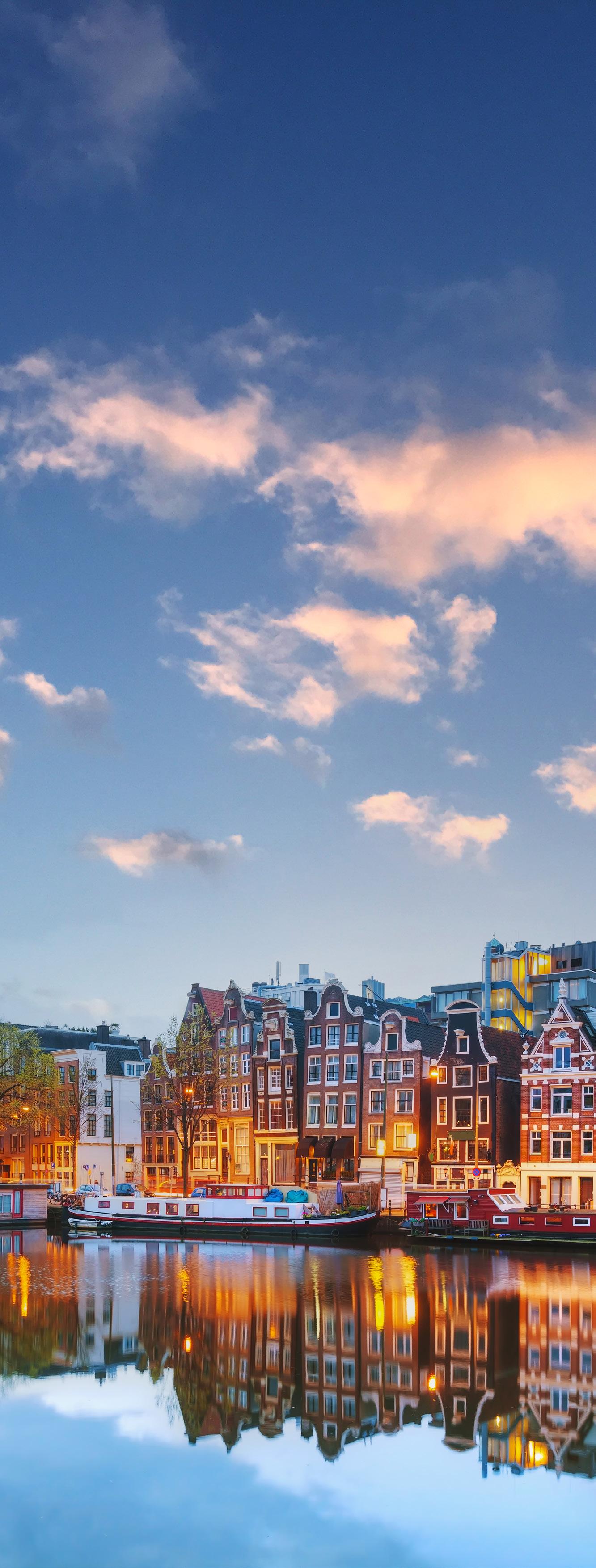
The fields of South Holland are an explosion of colour between March and May when the world’s biggest flower auction takes place at Aalsmeer.
The Kinderdijk windmills on the Alblasserwaard polder are a UNESCO World Heritage Site. The islands of Zeeland are home to beautiful old towns such as Middelburg, the provincial capital, Zierikzee, with its old harbour and the quaint old town of Veere.
Tourist website holland.com
Need the emergency services? Call 112

Adopted the Universal Declaration of Human Rights
Adopted the European Charter of Fundamental Rights
European Accessibility Act introduced across the European Union
Government actively working on improvement schemes in conjuntion with the EU and charities.
Ease of movement inside
Some public buildings are old and difficult to manoeuvre; however, most have been retrofitted and provide wheelchairfriendly WCs. Most large museums and galleries have lifts and ramps and at least one disabled WC. Outside of cities, attractions are less likely to have level access. Ground-floor attractions may sometimes include a few steps.
Ease of movement outside
Getting from A to B
Public spaces are variable, some being cobbled and others flat. Pavements can be cluttered and narrow in older parts. Rural towns and villages are largely accessible by car, and some places provide disabled parking spaces but be aware of high kerbs and steps.
Most buses and newer trams are wheelchair-friendly; however, not all stops provide level entry. Assistance will usually be provided to help facilitate entry and exit. Some train stations have lifts; most have disabled WCs, and trains are typically accessible. Some taxis can accommodate wheelchairs. On public transport maps, wheelchair-friendly stations and stops are marked.
What could be improved?
Universal transport and building access is near, but further work is needed.
A land full of contrasts, from magnificent snowcapped mountains, dramatic fjords, vast plateaux with wild, untamed tracts to huge lakes and rich green countryside. With nearly one-quarter of the land above the Arctic Circle, Norway has the lowest population density in Europe.

Norway is made up of five regions. In the heart of the eastern region, Oslo has everything one would expect from a major city and is the oldest of the Scandinavian capitals. The west coast boasts some of the world’s most beautiful fjords, with plunging waterfalls and mountains.
In the heart of central Norway, Trondheim is a busy university town with many attractions, notably the Nidarosdomen Cathedral. The sunniest region is the south; its rugged coastline with white wooden cottages is popular with Norwegians.
The north is the Land of the Midnight Sun and the Northern Lights. It is home to the Sami, the indigenous people of Norway, whose traditions include fishing, hunting and reindeer herding. The scenery varies from forested valleys and narrow fjords to icy tundra. There are several cities worth visiting, including Tromsø, with the Fjelheisen cable car, Polaria aquarium with bearded seals, and the Arctic Cathedral.
Tourist website visitnorway.com
Need the emergency services? Call 110 for fire brigade, 112 for police, 113 for ambulance
 Stavanger
Stavanger
Adopted the Universal Declaration of Human Rights
Norwegian Equality and AntiDiscrimination Act introduced
Ease of movement inside
All new buildings are required to have wheelchair access. Older buildings have begun to adapt. Some public buildings have disabled WCs. A majority of attractions are accessible to all. Some activities within attractions may not be suitable for all. Many castles and ruins are accessible but may be challenging to traverse in parts. Theatres and Royal palaces provide access and will assist if you book in advance.
Ease of movement outside
Getting from A to B
In cities, most pedestrian crossings are equipped with either a ramp or low kerb and an audible signal. Pavements are wellmaintained and generally free of clutter. While parts of the country are flat, there are some hilly areas. During the winter months, pavements can be icy. Rural towns and villages are accessible by car.
Public transport is moderately accessible but varies. All buses in Oslo are step-free, but trams are not. The city metro is easily accessed via all stations, bar one. The Flytoget highspeed train service and its stations are fully accessible. Vy, the national train operator, offers fully accessible travel and disabled WCs at most stations.
What could be improved?
As with the Netherlands, universal transport access is near, but a little more work is needed.
Portugal is the westernmost country of Europe, situated on the Iberian peninsula, bordered by Spain in the north and east, with the Atlantic coast in the south and west. Despite its relatively small size, the country offers a tremendous variety, both in its way of life and its history and traditions.

Every year the Algarve is the destination for some ten million sunseekers who love its sheltered sandy beaches and clear Atlantic sea. In contrast, the lush hills and forests of central Portugal are home to historic buildings and monuments, particularly the capital city of Lisbon, adjacent to the estuary of the River Tagus.
The land becomes rather impoverished to the southeast of Lisbon, consisting of stretches of vast undulating plains dominated by cork plantations. Most people head for Evora, a medieval walled town and UNESCO World Heritage Site. The Minho area in the north is said to be the most beautiful part of Portugal, home to the country’s only National Park and vineyards producing the famous Port wine.

Adopted the Universal Declaration of Human Rights
Adopted the European Charter of Fundamental Rights
European Accessibility Act introduced across the European Union
Government actively working on improvement schemes in conjuntion with the EU and charities, though progress is slow.
Ease of movement inside
All public buildings are required to provide disabled access, and facilities and older buildings have been retrofitted. Attractions are adapting slowly. In 2019, Portugal was the first country to receive the Accessible Tourist Destination award, recognising its efforts to adapt.
Ease of movement outside
Getting from A to B
Cluttered pavements can present problems, but improvements are actively being made. In major cities, open squares and wide streets provide space to manoeuvre. Smaller towns and rural villages will certainly provide challenges with steep climbs, narrow streets and cobbled pavements. Rural areas sometimes provide central parking.
Some buses are wheelchair-friendly. The bus network map indicates which services are accessible. In Lisbon, modern trams offer level access and wheelchair space on-board; however, not all stops have step-free access. The metro is partially accessible though there is no universal standard. Staff are helpful. Taxi drivers are accommodating, and most have space to store folding wheelchairs.
What could be improved?
Portugal is well on its way to becoming a barrier-free destination, but transport needs a little more work.
What Slovenia lacks in size, it makes up for in exceptional beauty. Situated between Italy, Austria, Hungary and Croatia, it has a diverse landscape; mountains, rivers, forests and the warm Adriatic coast.

Mount Triglav is at the heart of the snowcapped Julian Alps. From here down to the Adriatic coast, the Karst region is home to the famous Lipizzaner horses, vineyards and myriad underground caves, including the Postojna and Skocjan Caves.
The tiny Adriatic coast has several bustling beach towns. Ljubljana, one of Europe’s smallest capitals with beautiful baroque buildings, lies on the Ljubljanica river, spanned by numerous bridges, including Jože Plečnik’s triple bridge. Heading eastwards, the hilly landscape is dotted with monasteries, churches and castles, including the 13th century Zuzemberk castle, one of Slovenia’s most picturesque. The old city and castle sit alongside a thriving commercial centre. The Posavje region produces cviček, a famous blend of white and red wines.
Tourist website slovenia.info
Need the emergency services? Call 112
 Lake Bled
Lake Bled
Adopted the Universal Declaration of Human Rights
Adopted the European Charter of Fundamental Rights
European Accessibility Act introduced across the European Union
Government actively working on improvement schemes in conjuntion with the EU and charities.
Ease of movement inside
All public buildings provide level access though the method is not universal. Disabled WCs can also be expected. Accessible attractions often pride themselves on the ‘Disabled Friendly’ certificate, which shows that the attraction has made accommodations for those with impairments. Many offer reduced or free entry with ID.
Ease of movement outside
Getting from A to B
Many cities have been adapted to make it easy for wheelchair users to get around. City bus maps have Braille, public telephones are fitted with audio amplifiers, lowered ATMs have been fitted, lifts give access to underpasses and pavements are dropped. Some areas may be cobbled and narrow in older parts and rural regions.
Most buses and trains can accommodate wheelchairs. Taxi firms have specifically-adapted vehicles that are wheelchairfriendly. Disabled parking spaces are common, and one can park for an unlimited time in marked spaces. Speed3x Electric Wheelchairs can be hired free of charge in Ljubljana.
What could be improved?
A universal standard needs to be established and rolled out across the country.
One of the largest countries in Europe with glorious beaches, a fantastic sunshine record, vibrant towns and laid back sleepy villages, plus a diversity of landscape, culture and artistic traditions, Spain has all the ingredients for a great holiday.
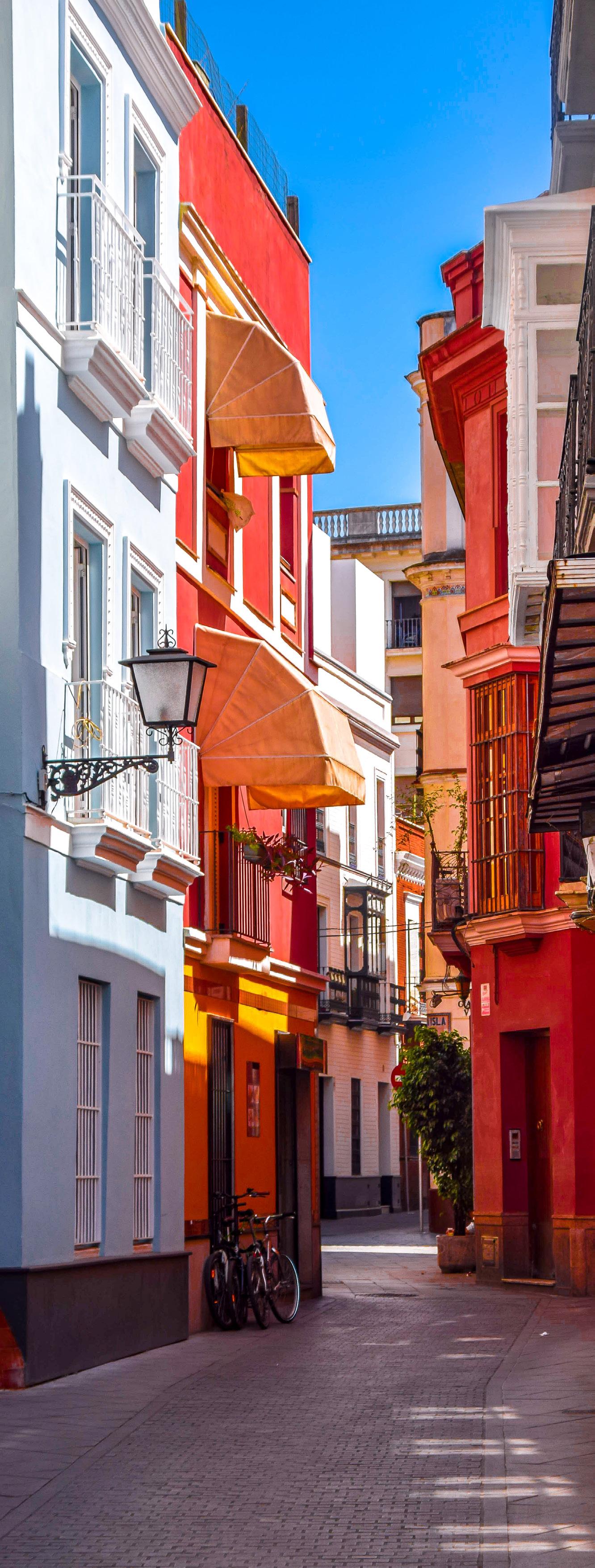
The verdant north with its ancient pilgrimage routes where the Picos de Europa sweep down to the Atlantic gems of Santander and Bilbao. Vibrant Madrid in the heart of the country boasts the Prado with works by Velázquez and Goya, the beautiful Plaza Major, plus all the attractions of a capital city.
Passionate Andalucía in the sun-soaked south dazzles with the symbolic art of flamenco. It offers the cosmopolitan cities of Córdoba, Cádiz and Málaga, alongside the magnificent Alhambra at Granada and the awe-inspiring Alcázar, a magical Moorish palace with scents of orange and Jasmine wafting through the air, a must-see in dreamy Seville. On the Mediterranean east coast, Valencia has a wealth of monuments and cultural sites, including the magnificent City of Arts and Science.
Tourist website spain.info

Need the emergency services? Call 112
Streets of Seville
Adopted the Universal Declaration of Human Rights
Adopted the European Charter of Fundamental Rights
European Accessibility Act introduced across the European Union
Government actively working on improvement schemes in conjuntion with the EU and charities, though progress is slow.
Ease of movement inside
All public buildings are required to provide access, but this isn’t always the case. Barcelona is often credited with being one of the most accessible cities in Europe, and many of its attractions are wheelchair-friendly, including Sagrada Familia. Most museums, galleries and modern buildings are accessible and provide disabled WCs.
Ease of movement outside
Getting from A to B
Most cities are flat, largely historic, and streets, pavements and public squares are often cobbled and uneven. Lack of maintenance is a problem. Many city centres are pedestrianised, and legally, all public spaces should be accessible. Rural areas are largely inaccessible.
Buses, metro, taxis and trams are mostly accessible. About 70% of Madrid’s metro and 90% of Barcelona’s is step-free. Valencia, Seville and Bilbao metro services are modern and supposedly 100% accessible, although it is worth checking beforehand. All buses are adapted to accommodate wheelchairs. Adapted taxis (Eurotaxis) can be booked using an app, calling directly or through the tourist information office.
What could be improved?
Making streets and public spaces more navigable and improving building access could make a difference.

With giant lakes and waterways, rich forests, majestic mountains and glaciers, and vast, open countryside, Sweden is almost twice the size of the UK but with a fraction of the population.
Southern Sweden’s unspoiled islands with their beautiful sandy beaches offer endless opportunities. The coastal cities of Gothenburg and Malmö, once centres of industry, now have an abundance of restaurants, historical and cultural venues and attractions.

With the Oresund Bridge, Malmö is just a short ride from Copenhagen. Stockholm, the capital, is a delightful place built on fourteen small islands on the eastern coast. It is a vibrant city with magnificent architecture, fine museums and historic squares. Sparsely populated northern Sweden is a land of forests, rivers and wilderness inhabited by moose and reindeer.
Östersund, located at the shores of a lake in the heart of the country, is well known for winter sports, while Frösö Zoo is a popular attraction. Today Sweden is one of the world’s most developed societies and enjoys an enviable standard of living.
Legal Provision
Adopted the Universal Declaration of Human Rights
Adopted the European Charter of Fundamental Rights
European Accessibility Act introduced across the European Union
Government actively working on improvement schemes in conjuntion with the EU and charities.
Ease of movement inside
Many public buildings are accessible with at least one lift and disabled WCs. Modern buildings are best equipped with level access, ramps, and lifts. Tourist spots have mostly adapted. In the capital, museums and galleries are almost 100% wheelchair-friendly and will have disabled WCs and automatic doors.
Ease of movement outside
Getting from A to B
Pavements are generally smooth, with little obstructing street furniture. The only area which could be tricky to navigate is the old town of Gamla Stan. There is extensive use of dropped kerbs, and public spaces are flat and well-maintained.
Overall, public transport in Sweden is excellent, and it’s nearly completely accessible. SJ, the national operator, have fitted their trains with special lifts and ramps, and staff are on hand to assist with prior arrangement. Metro and tram stations provide step-free access to platform. All buses have level access with heightened kerbs at stops in urban areas. There are audiovisual displays showing routes and service updates on buses, metro, trams and national train services.
What could be improved?
Building upon the current network and upgrading older systems could help propel Sweden to the top spot.
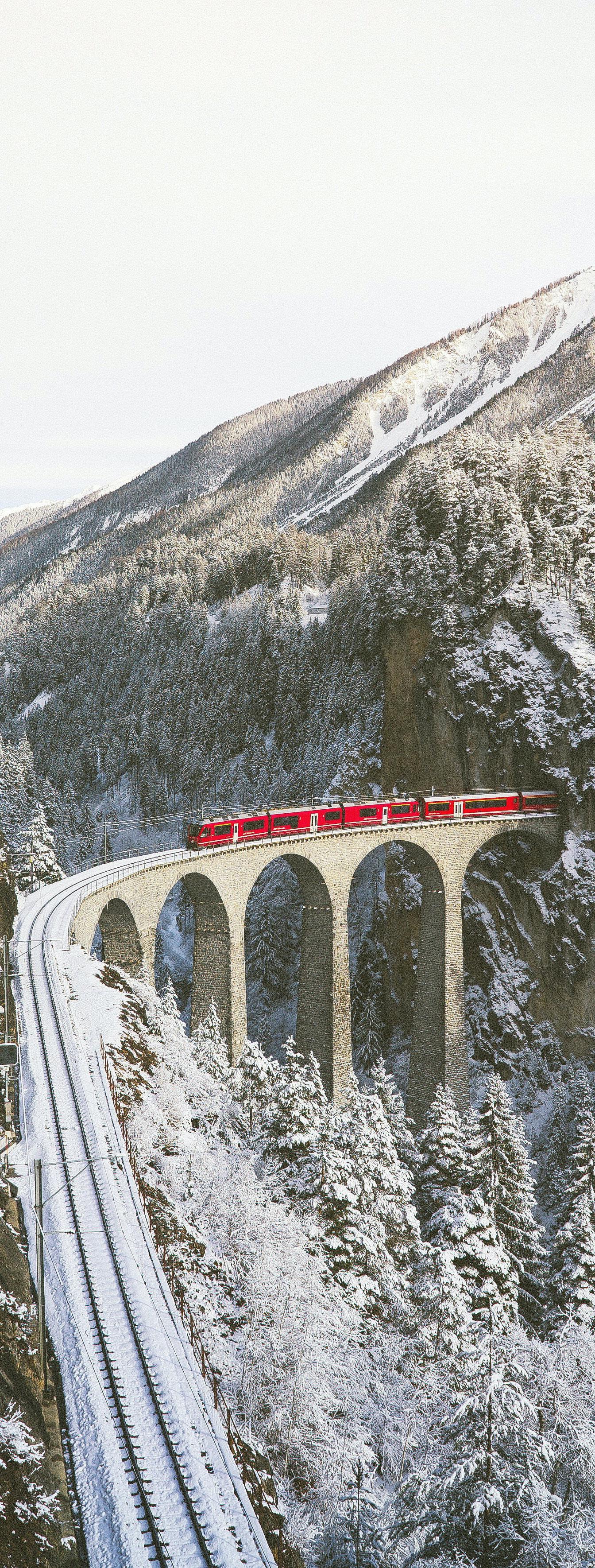
A small, wealthy country best known for its outstanding mountainous scenery, fine cheeses and delicious chocolates. Centrally situated in Europe, it shares its borders with France, Austria, Germany and Italy, each one having its own cultural influence on the country.
With its snowy peaks and rolling hills, the Bernese Oberland is the most popular area while Gstaad is a favourite haunt of wealthy skiers.
German-speaking Zurich is a multicultural metropolis with over 50 museums, sophisticated shops and colourful festivals set against a breathtaking backdrop of lakes and mountains.
Geneva, Montreux and Lausanne make up the bulk of French Switzerland, with vineyards that border the lakes and medieval towns. The southernmost canton, Ticino, is home to the Italian-speaking Swiss, with the Mediterranean style lakeside resorts of Lugano and Locarno.
Tourist website myswitzerland.com
Need the emergency services? Call 112

Adopted the Universal Declaration of Human Rights
Disability Discrimination Act introduced (revised in 2017)
Government actively working on improvement schemes in conjuntion with the EU and charities.
Ease of movement inside
The capital is designed considerably in terms of accessibility. All modern buildings are accessible, with ramps, lifts, level access and disabled WCs. Older buildings are adapting and have special dispensations for disabled visitors. Many historical attractions have been made accessible, but perhaps understandably, areas that offer aerial views are not always accessible due to steps and narrow passages. Museums and galleries have disabled WCs on site.
Ease of movement outside
Getting from A to B
A large majority of Switzerland’s urban areas are flat and easily navigable. Even Bern’s Old Town, which is cobbled, is accessible as the cobbles are flat - although it may be a little bumpy. Pavements tend to be clear and flat, although, in some areas, there may be steps.
Very well equipped overall. Most train stations have mobile lifts to assist with boarding; buses have ramps or level access and dedicated space on-board. Tourist information offices will offer more information on travel and transport.
What could be improved?
Rural areas are yet to adapt fully, and trails are not always wheelchair-friendly.
Great Britain Provisions differ across the four nations, although national museums, public spaces and state-operated venues tend to be uniform in their approach. Always check before travelling.

Spain According to Article 121 of Spain’s General Road Traffic Regulations, a person in a wheelchair (manual or powered) is considered a pedestrian and is thus obliged to remain on the pavement unless there is no pavement or it’s not practical. But these regulations make a special stipulation; if the pavement is not navigable, a wheelchair user can move onto the road as long as they take proper precautions. They must travel carefully, as far as possible to the right-hand side, and without unnecessarily impeding traffic.
Sweden Stockholm is almost 100% cash-free. Banks now rarely handle cash, and most venues only accept card or mobile payments.
Croatia On 1 January 2023, Croatia joined the Eurozone. The Croatian Kuna is no longer legal tender. Coins and notes can be exchanged at no cost at any bank until the end of 2023 or at the Croatian National Bank until 2025.
Andorra Steadily improving. Public spaces, shops and restaurants in major cities, larger towns, and some ski resorts have wheelchair access and disabled WCs.
Bulgaria Unfortunately, Bulgaria isn’t an easy country to visit for wheelchair users. Facilities are few and far between, and uneven terrain makes movement hard.
Finland By law, most public bodies have to provide access to all, meaning most public buildings will have ramps, lifts, level access and adapted WCs. Public transport is well-equipped.
Hungary Huge improvements have been made, and now most public areas and facilities in cities and larger towns are accessible.
Liechtenstein All bus routes are operated with lowfloor vehicles, and some attractions have facilities for disabled visitors.
Poland Generally speaking, accessibility in Poland is difficult but possible. Cobbled streets, stairs, and high kerbs present a challenge. Many older buildings are adapting by adding ramps, lifts and wide, automatic doors. All new buildings are accessible.
Slovakia Certainly not great. Accessibility is by no means universal. Transport and building access is very hit-and-miss.
Disability Rights UK disabilityrightsuk.org
A UK-based charity set up to create a society where disabled people have equal power, rights and equality of opportunity.
InclusionEurope inclusion-europe.eu
Europe-wide charity fighting for equal rights and full inclusion of people with intellectual disabilities.
Motability motability.org.uk
National charity with the purpose of enhancing the lives of disabled people with transportation solutions and charitable grant programmes.
NewLife newlifecharity.co.uk
A UK-based charity providing help and support to disabled children and their families.
NHS nhs.uk
UK National Health Service providing healthcare, information, advice, and other health-related services.
Prince’s Trust princes-trust.org.uk
A UK-based charity founded by King Charles III that provides help, support and advice to young people with disabilities and those who are vulnerable, living in poverty, struggling with education, employment or other difficult circumstances.
Scope scope.org.uk
Disability equality charity that campaigns for a fairer society and provides practical information and emotional support.
